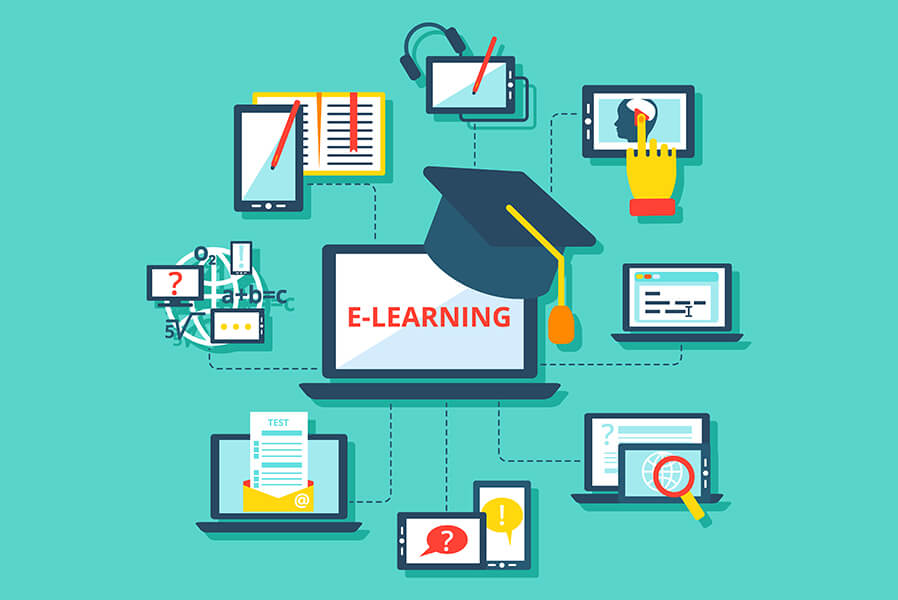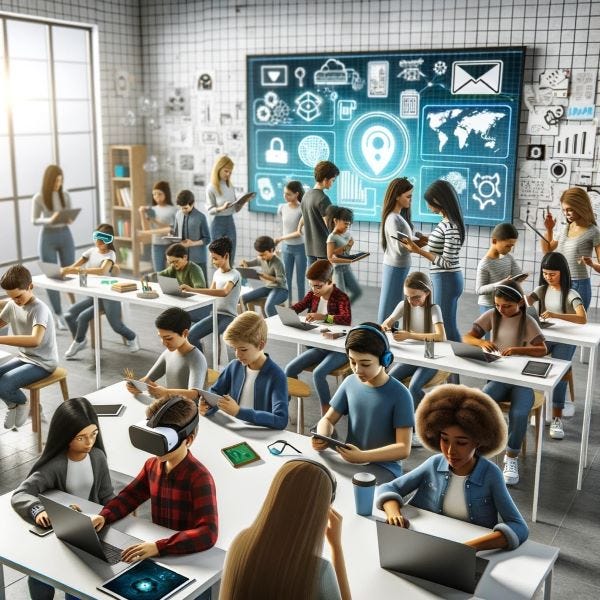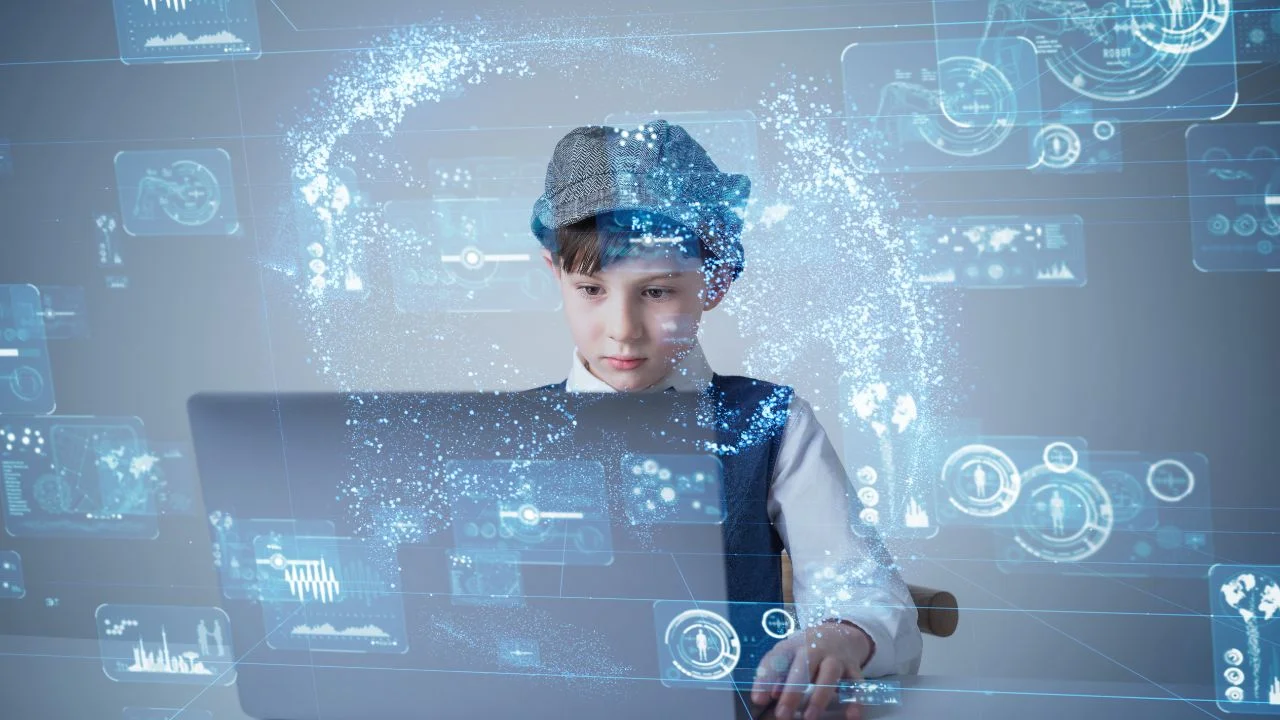How Technology is Changing Education for the Better.
In the last few years, technology has gone from being a nice extra to a core part of the education experience. As digital tools transform industries everywhere, education is seeing big changes too. From elementary classrooms to college lecture halls, technology is completely reshaping how we teach, learn, and interact. This article will dive into how technology is making education more accessible, tailored to individual needs, and engaging. We’ll also touch on the challenges, including the need to make sure every student has equal access, so these advancements can help everyone.

Opening the Door to Digital Classrooms
One of the biggest benefits of technology in education is expanded access. The pandemic led to a worldwide shift to online learning, bringing digital classrooms into the mainstream faster than ever. Today, students in remote areas, those with physical limitations, and even international students can tap into quality education online. Schools everywhere now use digital platforms that let students join classes and collaborate with peers no matter where they are. Tools like Google Classroom, Microsoft Teams, and Zoom have become essential, helping break down geographic barriers and making education more inclusive.
Personalized Learning with AI and Machine Learning
Traditional education often follows a “one-size-fits-all” approach, which doesn’t always work well for students with different learning needs. That’s where technology, especially AI and machine learning, comes in. These tools now personalize learning experiences by tracking each student’s pace, strengths, and areas that need improvement. For example, Khan Academy uses AI to create custom study plans, letting students go through subjects at their own speed. Adaptive learning software identifies when a student needs extra help or a new challenge, keeping them engaged without feeling frustrated or left out.
This approach puts students in control of their learning, while teachers gain insights to offer better support. Overall, it means students get a more engaging and meaningful education experience tailored to their unique needs.

Better Collaboration and Communication
Technology also enhances collaboration and communication. Tools like interactive whiteboards, digital breakout rooms, and apps like Padlet, Jamboard, and Slack enable students to work together in ways that traditional classrooms can’t always match. These tools allow real-time brainstorming and project collaboration, whether students are in the same room or halfway across the world. Teachers benefit, too, with tools that let them guide discussions and monitor group projects effectively.
These collaboration tools also build “soft skills” like teamwork, problem-solving, and communication—skills that are crucial in today’s job market. As students work on projects and discuss ideas online, they’re learning skills they’ll use throughout life.
Learning through Augmented and Virtual Reality
Imagine studying ancient Egypt from your classroom, exploring the details of the human body, or grasping complex scientific ideas through immersive 3D experiences. Augmented reality (AR) and virtual reality (VR) make these things possible, creating rich, hands-on learning experiences. AR and VR can help students understand and remember information better, with studies showing they can boost comprehension and memory by up to 30%.
For subjects like medicine, engineering, and science, VR is especially valuable. Anatomy students can look at muscles and organs in VR, and engineering students can safely explore complex machinery. These experiences deepen learning, spark curiosity, and motivate students to dive into topics more fully.

EdTech Apps: Advantages and Drawbacks
EdTech apps like Duolingo, Quizlet, and Coursera have made learning easier and more flexible. Platforms like Coursera and edX offer university-level courses, while language apps like Duolingo help students practice anywhere, fitting learning into everyday life. These tools let students study on their own terms, promoting both academic growth and personal development.
But EdTech also has challenges. Privacy is a concern, as these platforms collect a lot of personal data. Parents and schools need to understand privacy policies and advocate for ethical data practices. Also, subscription fees for some EdTech tools can create inequalities, as not all families can afford premium features.
Building Digital Literacy and Responsible Use
As technology becomes more integrated into education, teaching digital literacy is essential. Digital literacy helps students navigate, evaluate, and use digital information responsibly. It includes understanding privacy, recognizing misinformation, and practicing proper online behavior.
Teachers play a big role in guiding students in ethical technology use, from respecting copyrights to maintaining privacy and creating an inclusive online environment. This guidance helps students become informed, respectful digital citizens.

Closing the Digital Divide
Even with all the benefits of technology, not every student has the same access to digital tools, creating a “digital divide.” This divide often comes from economic inequalities, with students from low-income families lacking devices, reliable internet, or safe learning spaces. Bridging this gap is crucial to making sure everyone has equal access to technology’s benefits.
Governments, nonprofits, and private companies can help by providing affordable internet, low-cost devices, and support programs. Teachers can also use offline-friendly or low-data tools to support students with limited connectivity.
What’s Next for Education Technology?
As technology advances, more trends will shape the future of education. AI will likely bring even more personalized learning, predictive feedback, and automated grading to lighten teachers’ workloads. Blockchain technology could make it easier to store student records securely, streamlining the college admissions process.
Connected devices (IoT) in classrooms could also optimize learning spaces by adjusting lighting, temperature, and sound to improve focus. And with 5G, faster and more reliable internet could bring even more immersive learning experiences.

Looking Ahead: Balancing Technology with Thoughtfulness
Technology in education is more than just new gadgets; it’s a shift in how we approach teaching and learning. By expanding access, supporting personalized learning, fostering collaboration, and building essential skills, technology is paving the way for a more inclusive, engaging, and effective future in education. But it’s important to balance these benefits with ethical considerations, ensuring all students can succeed in a digital world.
Educators, parents, policymakers, and communities need to work together to use technology as a positive force in education. When used thoughtfully, technology can prepare the next generation with the skills, knowledge, and mindset they need to thrive in a complex, tech-driven world.



You must be logged in to post a comment.